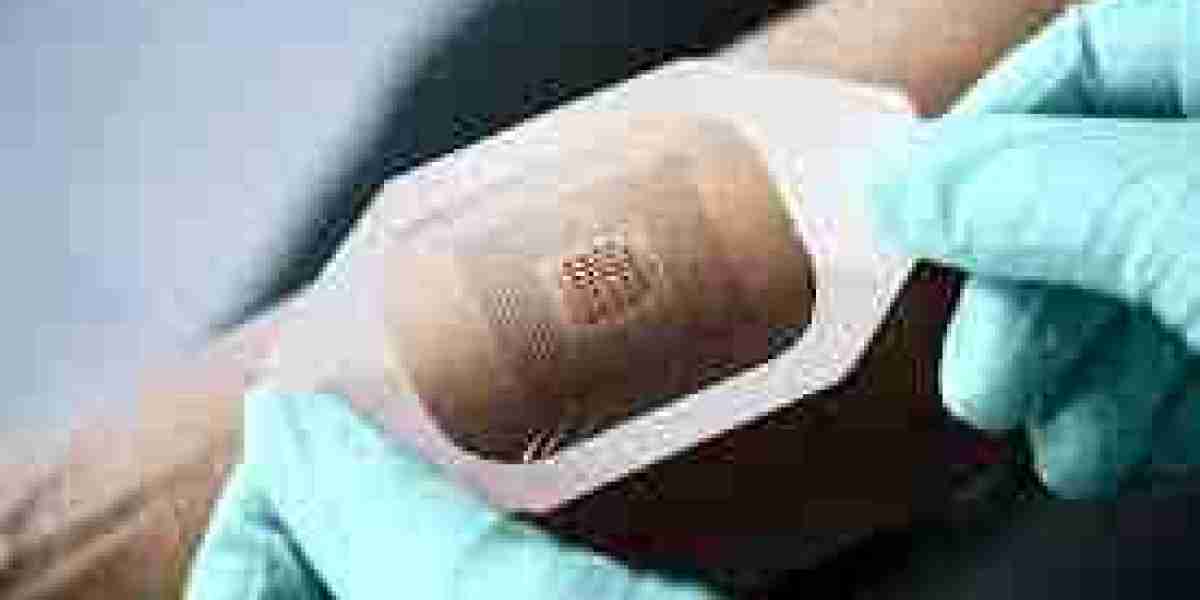The global medical adhesives market is witnessing significant expansion in its scope, driven by rising healthcare needs, growing surgical volumes, and technological innovations. From wound dressings to implantable medical devices, medical adhesives play a vital role in enhancing clinical outcomes, patient comfort, and device functionality. As the industry evolves, so does the potential for these adhesives across various healthcare settings.

Scope Overview
Medical adhesives are substances used to bond biological tissues or attach devices to the body. The market encompasses a broad range of product types, including pressure-sensitive adhesives (PSAs), hydrogels, silicone-based adhesives, and cyanoacrylate glues. These materials are tailored for specific applications—such as internal surgical bonding, wearable medical devices, and external wound closures—each requiring unique performance characteristics like flexibility, biocompatibility, moisture resistance, and prolonged adhesion.
Application Areas Broadening Scope
The application scope of medical adhesives extends across multiple sectors of healthcare:
1. Wound Care and Dressings
Medical adhesives are extensively used in wound closure strips, surgical tapes, and advanced dressings. They offer superior adhesion, breathable coverage, and minimal skin trauma upon removal. Chronic wound management, especially for diabetic ulcers and pressure sores, is a major driver in this segment.
2. Surgical Procedures
In modern operating rooms, adhesives are replacing traditional sutures and staples in many minimally invasive surgeries. Fibrin glues and synthetic surgical sealants enable faster closure, reduced scarring, and lower infection risks. Their use is particularly prevalent in cardiovascular, orthopedic, and cosmetic surgeries.
3. Wearable Medical Devices
The surge in remote patient monitoring and wearable health tech—such as glucose monitors, ECG patches, and infusion pumps—has fueled demand for skin-friendly, long-wear adhesives. These adhesives must accommodate daily movement, perspiration, and prolonged skin contact without causing irritation.
4. Medical Device Assembly
Beyond direct patient application, adhesives are vital in assembling medical instruments and diagnostics, such as catheters, IV delivery systems, and biosensors. Strong yet precise bonding is crucial for maintaining device reliability, sterility, and patient safety.
5. Dental and Orthopedic Uses
In dentistry, adhesives help bond crowns, bridges, and orthodontic brackets. In orthopedics, bone adhesives are emerging as alternatives to screws and plates, especially in trauma and pediatric surgeries.
Material Diversity and Technological Scope
The market scope is also defined by the diversity of materials used:
Acrylic adhesives dominate the market due to strong bonding and moisture resistance.
Silicone adhesives are prized for their biocompatibility and use on sensitive skin.
Cyanoacrylates offer quick-setting properties ideal for emergency care.
Hydrogels and bio-based adhesives are expanding the scope toward eco-friendly and biodegradable applications.
Recent innovations are expanding technical capabilities such as:
Temperature-sensitive adhesives that activate with body heat
Conductive adhesives for biosignal transmission
Antimicrobial coatings that prevent infections
Bioresorbable adhesives that dissolve naturally without removal
Geographic Scope and Market Penetration
The scope of the medical adhesives market is also global in nature. North America leads in terms of advanced product adoption, regulatory approvals, and healthcare infrastructure. Europe follows closely with growing investments in surgical innovation and medical research.
However, the most notable expansion is occurring in Asia-Pacific and Latin America, driven by:
Increasing access to healthcare
Expanding aging population
Growth in medical tourism
Local manufacturing capabilities and affordability
Countries like China, India, Brazil, and South Korea are rapidly emerging as high-potential markets, offering a fertile ground for market expansion.
Regulatory Scope and Compliance
The regulatory scope of medical adhesives is stringent, requiring compliance with bodies like the U.S. FDA, EU MDR (Medical Device Regulation), and ISO standards for biocompatibility and sterility. Companies must also meet environmental and sustainability standards, especially when dealing with disposable adhesives and packaging.
Emerging regulatory frameworks in developing nations are adding complexity but also creating opportunities for standardized, high-quality adhesive products in underregulated markets.
Growth Opportunities and Future Scope
The medical adhesives market is projected to grow robustly over the next decade, and its future scope includes:
Smart adhesives with integrated sensors for real-time health monitoring
Regenerative adhesives that support tissue healing
Eco-conscious formulations reducing medical waste
3D-printed adhesive components tailored for personalized medical devices
Moreover, collaborations between medtech companies and adhesive manufacturers are expected to accelerate custom solutions, driving deeper penetration into niche therapeutic areas.
Conclusion
The scope of the medical adhesives market is expanding in multiple dimensions—application, material innovation, geography, and compliance. As global healthcare systems continue to prioritize efficiency, safety, and patient experience, the demand for specialized adhesives will only intensify. For stakeholders across the supply chain, from R&D to end-use, the growing scope signals vast opportunities for product development, market entry, and strategic innovation.




